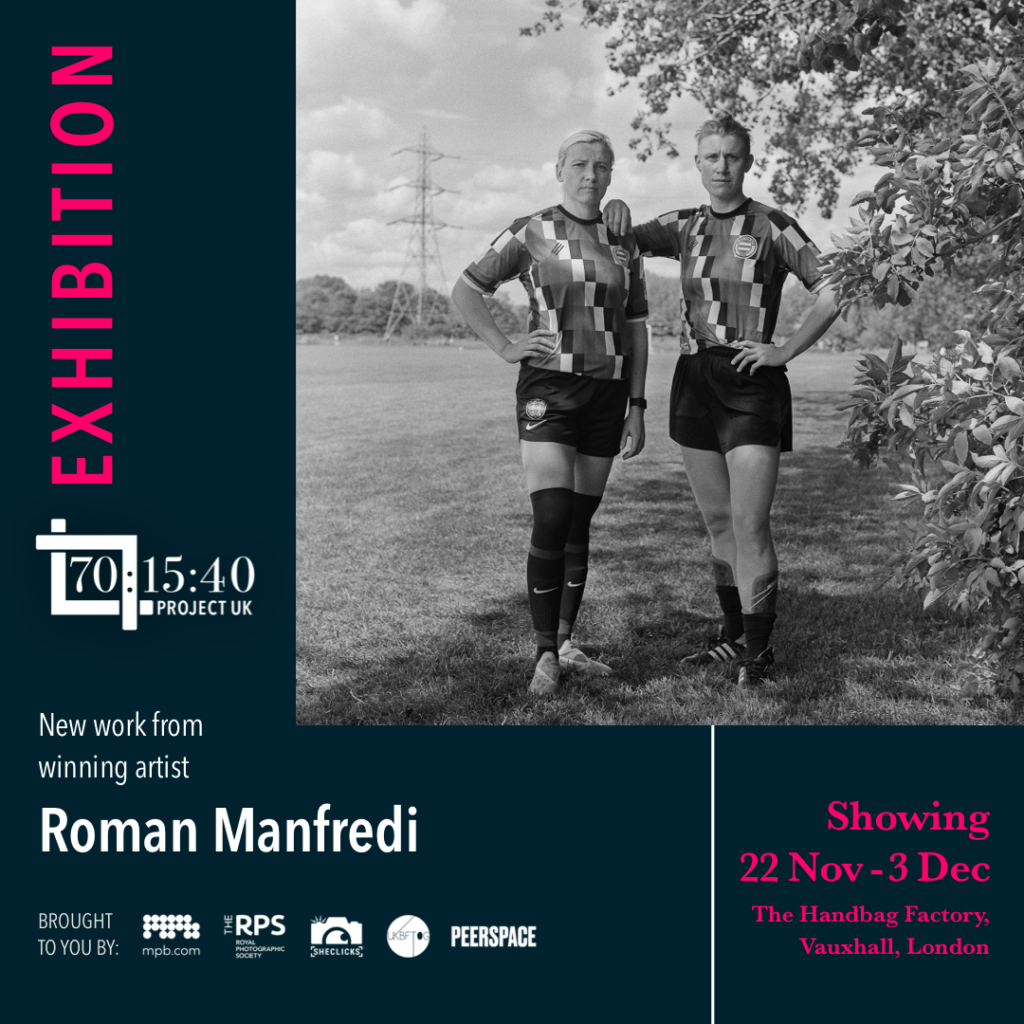Photographer Roman Manfredi’s new work Fair Play is a portrait/documentary project that features Clapton CFC’s women and non-binary development and reserves teams.
It’s been selected for exhibition as one of four finalists of the 70:15:40 Project, which aims to address the underrepresentation of women, trans and non-binary people working in photography and videography.
Women comprise 70% of photography graduates but only 15% of professional photographers are women who earn an average of 40% less than men.
Following an open-call for entrants, the competition’s eleven-woman judging panel of celebrated photographers and industry professionals selected Roman Manfredi alongside Hanna Ali, Violeta Sofia and Paloma Tendero as the four finalists.
The exhibition runs from November 22 to December 3 (Monday-Friday, 11am-5pm and Saturday-Sunday, 10am-5pm) at Handbag Factory, Vauxhall. More information.
About Roman Manfredi
Using analogue photography, moving image and sound, Roman’s work explores the intersections of personal narratives and political landscapes through the everyday lived experience. Roman is a LensCulture Art Photography Awards 2024 winner whose work has been exhibited internationally throughout 2024.
Roman will be exhibiting Fair Play, a documentary/portrait project that centres Clapton Community FC’s women/non-binary development and reserves teams. The project will explore themes of equity and solidarity through the power of grassroots community engagement. Renowned for their anti-fascist slogan no pasarán, Clapton Community Football Club are East London’s 100% fan-owned and fan-run football club and proud owners of The Old Spotted Dog ground in Forest Gate.
Roman’s recent project, We/Us, was the UK’s first visual art project celebrating the undocumented presence of butches and studs from working-class backgrounds. Using film photography and an audio installation the project explored intergenerational female masculinity through the structures of class and race within the British landscape.
Roman says, “Highlighting the position of women, trans and non-binary people in photography is important as a means of visibility and representation. My work draws precisely from my own experience of not fitting into binary gender roles, using the power of visual storytelling as a means of breaking down stereotypes.”

